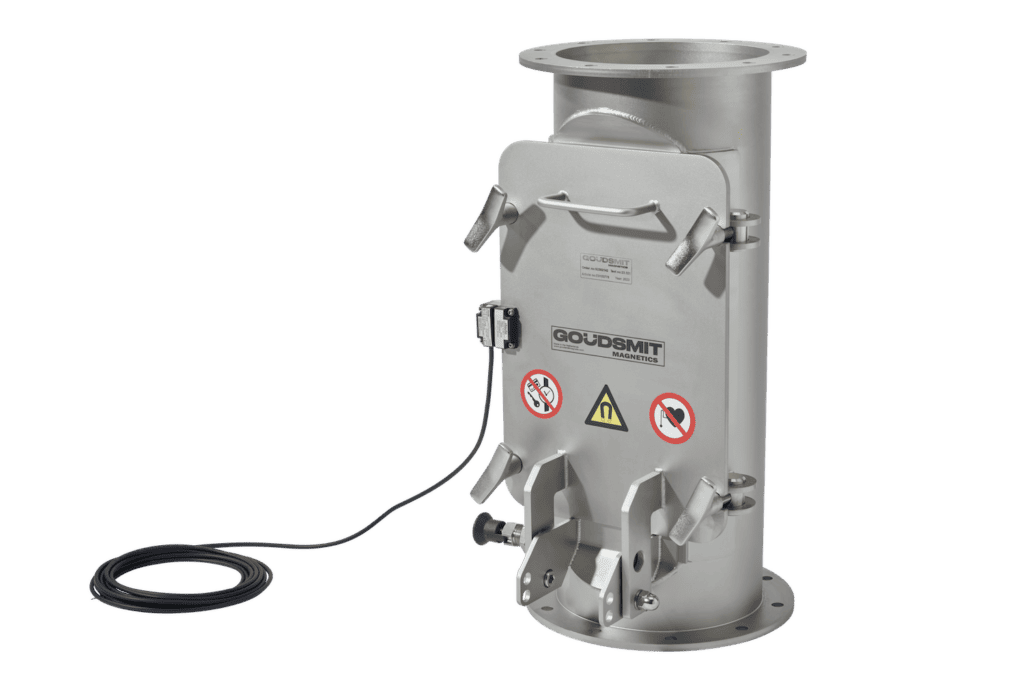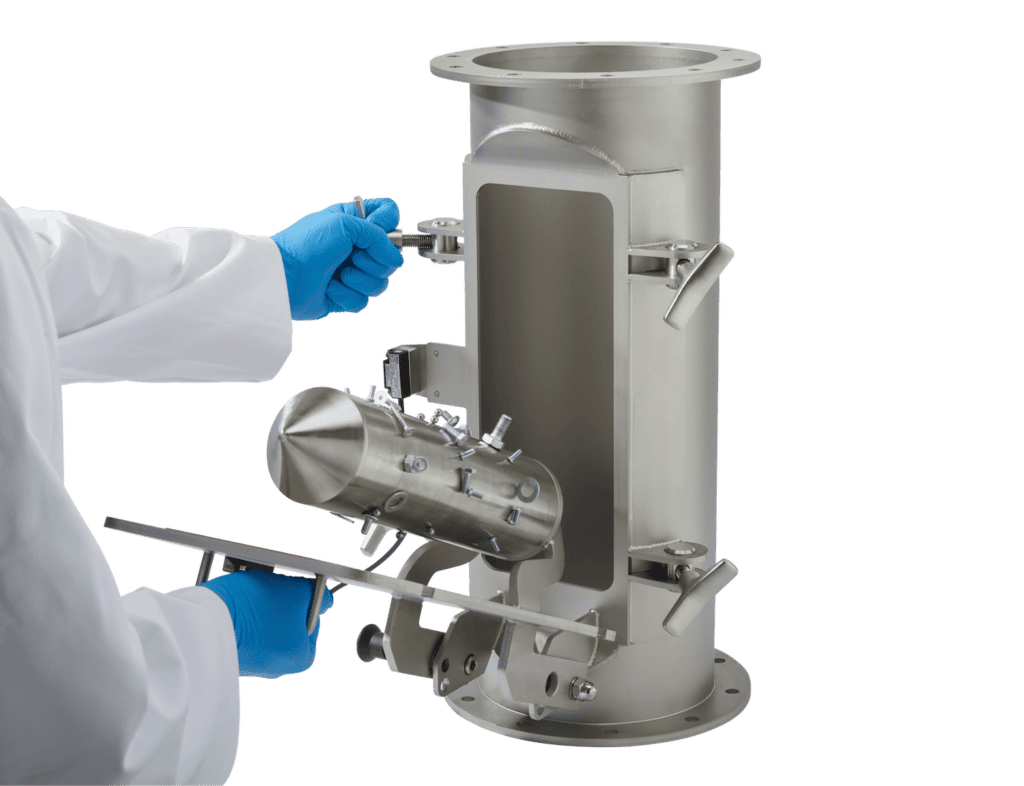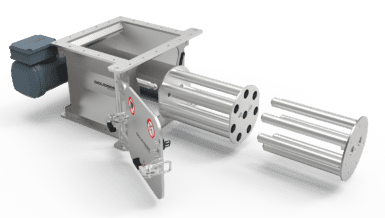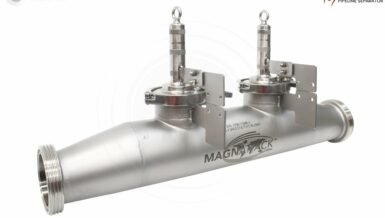This results in a higher degree of separation and also makes it possible to capture smaller metal particles in addition to coarse ones. Steel particles present in the product flow such as bolts, nuts, washers, screws, small metal balls, broken threads and clips can be effortlessly separated from grains, corn, flour, wheat flour and other incoming goods flows. The new magnet system is suitable not only for mounting in free-fall pipes, but also for pressure pipes. The stainless steel bullet magnet can be used in food but also other industries.
Low installation height & compact design
The 12,000 gauss pipe magnet was developed in response to specific market demands. The first requirement was to develop a pipe magnet with a low installation height that, with a small adjustment in terms of pipe length, can be easily integrated into existing processes. This, together with the high flux density, means that the magnet can already be used at goods intake. An additional advantage is that the pipe magnet captures smaller metal particles in addition to large metal particles, improving product quality. This prevents dust explosions and damage to machinery, resulting in production stoppages. The stainless steel pipe magnet can optionally be fitted with various flanges, such as DIN, Jacob etc. This makes the product widely applicable.
Quick access for easy cleaning
Despite the strong permanent magnetic core, the magnet is easy to clean. Through the door with vertical suspension, inspecting for contamination levels is seconds work. The magnet can be opened and cleaned by hand or a scraper. Smaller metal parts, such as balls or broken threads, can be easily pushed above the tapered top of the magnetic core and then removed. This is an improvement over previously designed versions. To prevent the magnet from being opened during the production process, it is possible to fit the stainless steel pipe magnet with a safety switch.



The recently developed pipe magnet with stainless steel housing requires a lower installation
height and achieves a higher flux density of 12,000 Gauss.








































